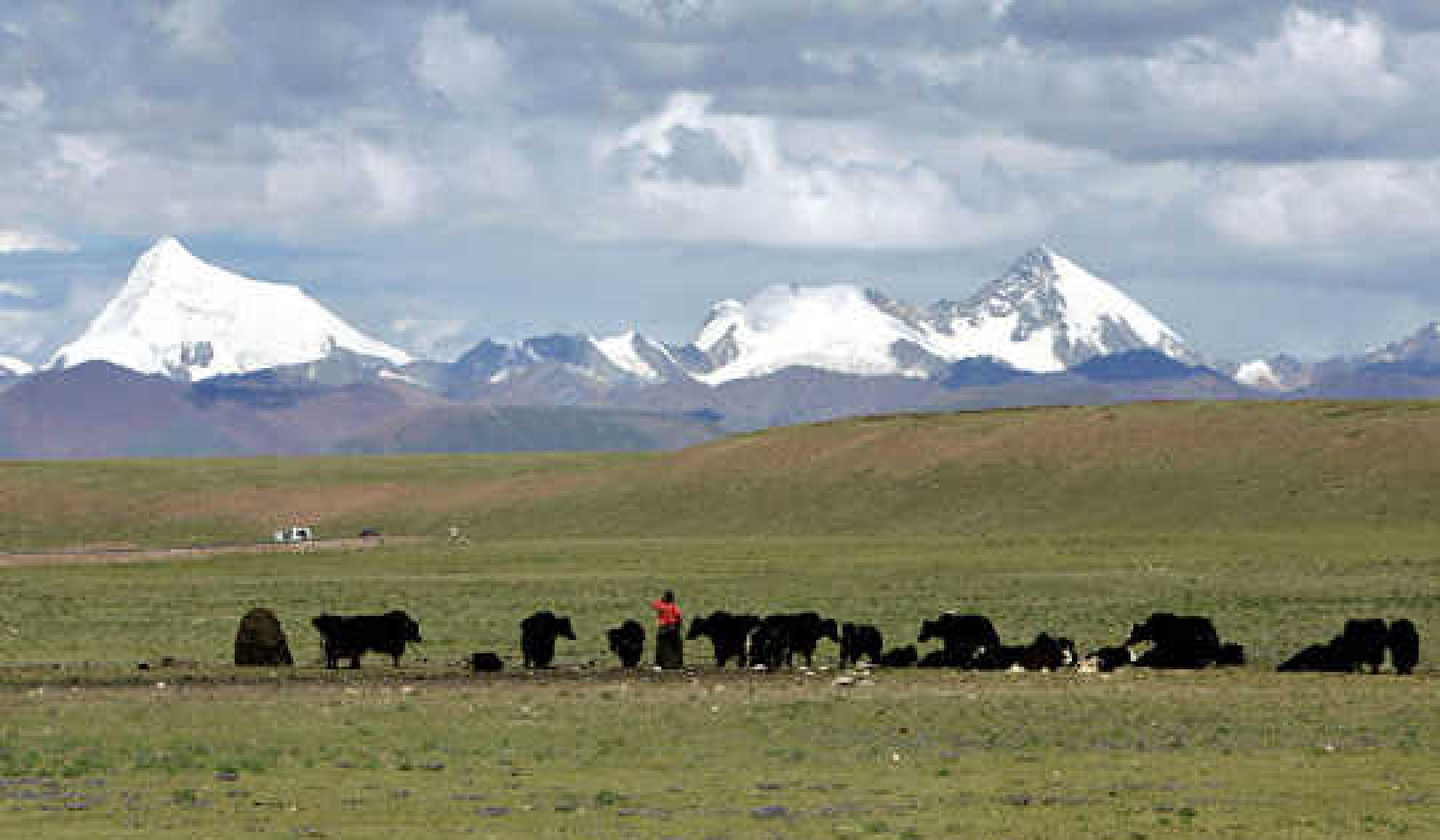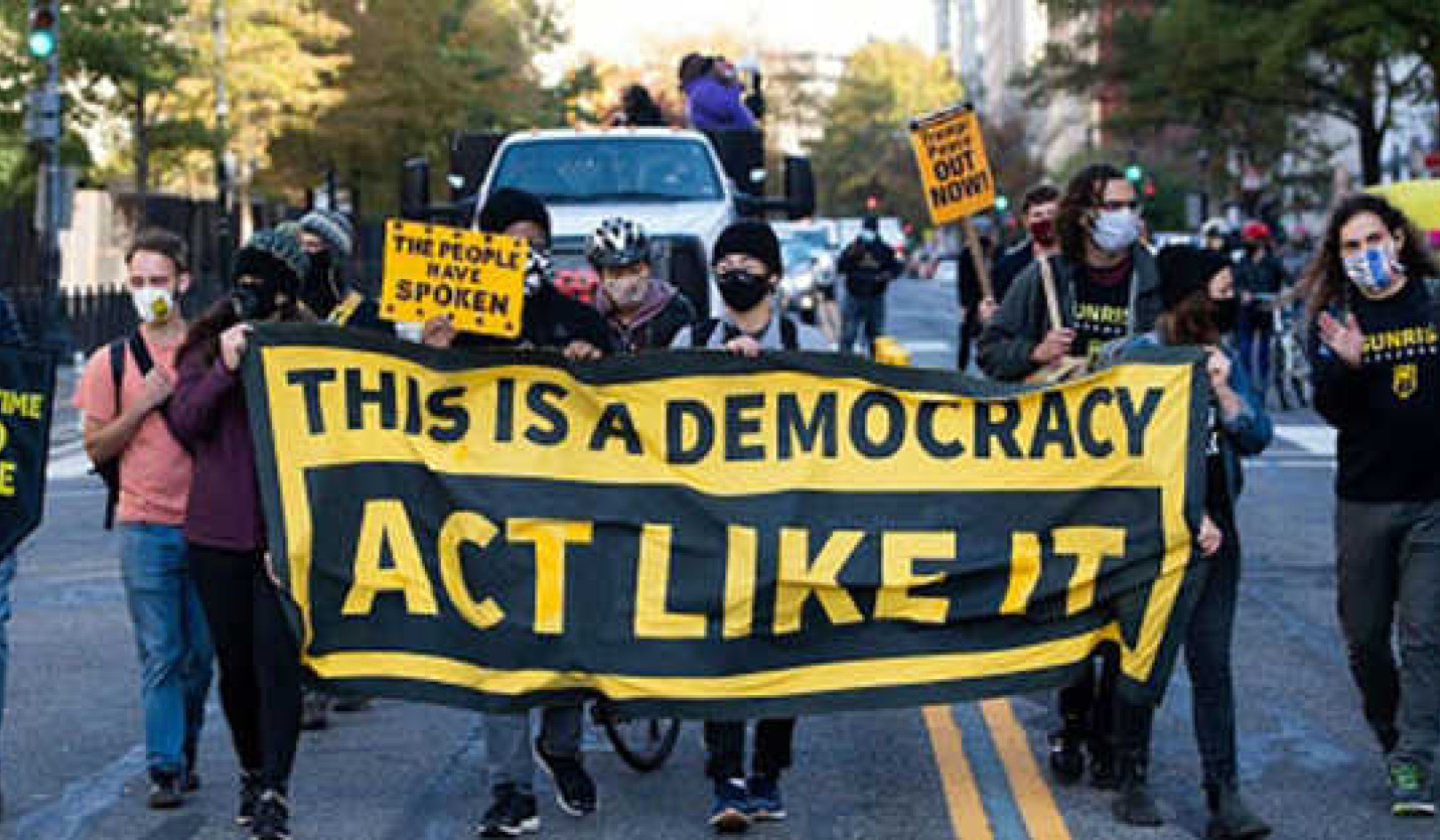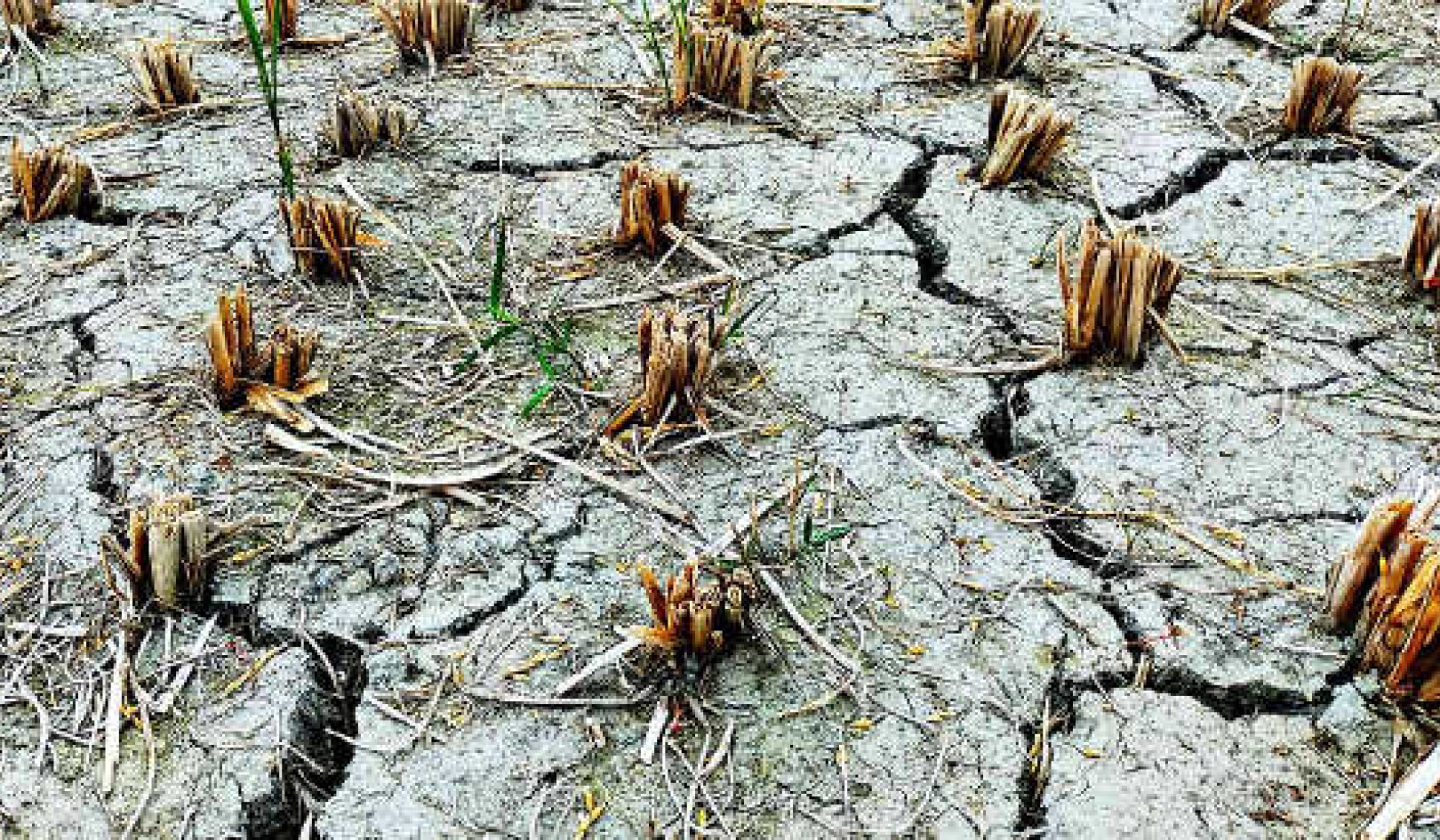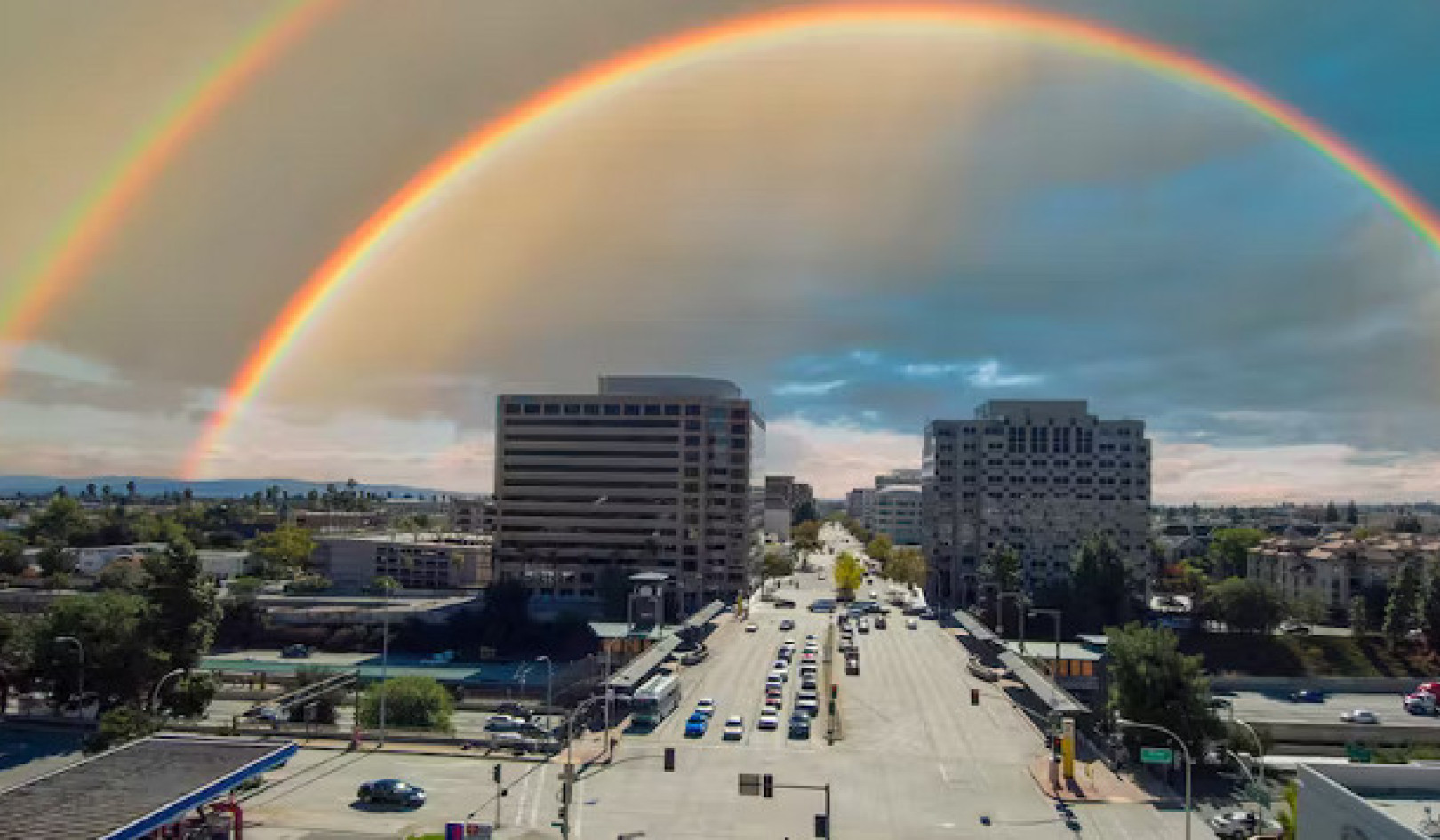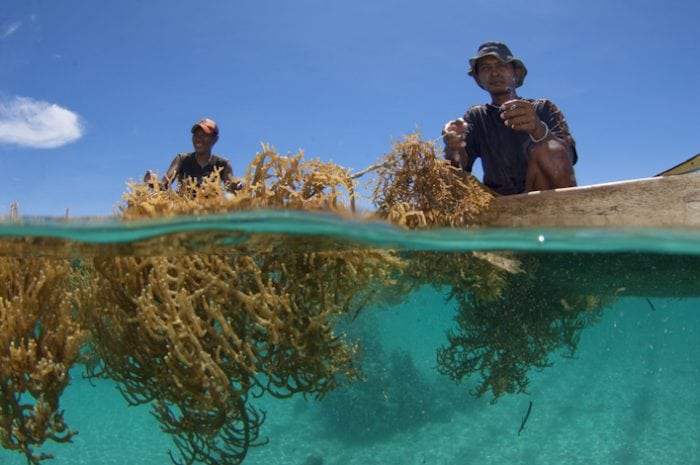
Seaweed is a lot more than marine debris you find on the beach. It may play a big role in the effort to mitigate climate change, researchers say.
According to the Intergovernmental Panel on Climate Change (IPCC), addressing carbon emissions from our food sector is absolutely essential to fight climate change. While land and agriculture took center stage in the panel’s most recent report, how the oceans at large could help in that fight was largely missing.
For their study, researchers investigated the carbon offsetting potential of seaweed aquaculture.
“It’s not a silver bullet, nor an industry that exists yet,” says Halley Froehlich, an assistant professor in the environmental studies and marine biology department at the University of California, Santa Barbara and lead author of a paper in Current Biology. “But it has huge potential.”
Seaweed aquaculture could indeed be a powerful new way to sequester carbon, say researchers who synthesized diverse datasets from scientific literature. The process would involve cultivating seaweed and harvesting it for the purpose of sinking the algae in the deeper ocean, where the carbon stored in its tissues would remain “buried.”
“We really wanted to know if it could be beneficial, but also be realistic about its potential,” Froehlich says of the research, which she and colleagues bounded with constraints including nutrients, temperature, and geographic suitability. They also assessed production growth and cost, and investigated the mitigation potential on various scales with a focus on the food sector—a major source of greenhouse gases and a considerable hurdle to fight climate change.
Infant industry
There is substantial suitable area—roughly 48 million square kilometers [more than 18.5 million square miles]—in which seaweed could be farmed, and a relatively small proportion (0.001%) would be enough to render the entire global aquaculture industry carbon neutral, according to the study.
However, the benefits don’t scale proportionally against the much higher greenhouse gas-emitting global agricultural sector, in part due to cost and growth constraints, Froehlich says. Farming seaweed alone won’t balance emissions from global food production, she adds, but could be a useful new tool in a suite that includes other carbon reduction and offset measures such as cleaner sources of energy, reforestation, and protection of carbon sinks.
Greenhouse gas-mitigating seaweed farming could have the most potential when it comes to achieving local and regional carbon neutrality goals, the study finds. California is particularly well-primed to reap the mitigating benefits of seaweed aquaculture, given the state’s strong climate action policy and its long, nutrient-rich coast. An area of only 3.8% of the West Coast Exclusive Economic Zone (a marine zone that extends no more than 200 miles [just under 322 km] from the coast) would be enough to offset the carbon produced by the state’s agriculture sector.
Relative to the rest of the world, US seaweed aquaculture is still somewhat in its infancy.
“The vast majority of seaweed aquaculture occurs in Southeast Asia,” Froehlich says. While no measurable seaweed farming was occurring in the United States in 2016—the most recent time period of the study—small seaweed farms are starting to emerge in the US, though primarily for food and other commercial purposes, and not for carbon sequestration.
No simple solution
The US, meanwhile, is the world’s second-biggest emitter of greenhouse gases, Froehlich points out, underscoring the need for solutions such as seaweed farming to mitigate the millions of tons of carbon dioxide equivalents the country emits per year. Fortunately, seaweed farming has other appealing and beneficial environmental effects, she notes.
“We like to call it ‘charismatic carbon’ because it has additional benefits,” Froehlich says, “such as potentially providing habitat for fish and other marine life, reducing ocean acidification and oxygen depletion, and taking up excess nutrients in local areas.”
Seaweed cultivation’s beneficial climate effects far outweigh the fact that it can’t completely offset the country’s food production greenhouse gas emissions. In fact, according to coauthor Benjamin Halpern from the National Center for Ecological Analysis and Synthesis, there is not—and never will be—a single tool for dealing with climate change.
“The problem has become too big for simple solutions,” he says. “We need all hands on deck.” While solutions to climate change will not be easy, the more strategies, the better, he says.
“The huge advantage is that if we can actually deploy many different strategies—from seaweed farming to renewable energy to energy efficiency and others—the solution is more resilient,” Halpern says.
To make it a real option in the United States, policy would need to enable and accelerate seaweed cultivation for carbon sequestration, farmers would need to respond by dramatically scaling up production, and the carbon market would need to expand to offer higher prices.
In the meantime, research will continue to investigate seaweed cultivation’s potential for mitigating climate change.
“My colleagues and I are now assessing other paths seaweed can take to find the ‘best bang for your buck’ on carbon mitigation,” Froehlich says. Given that farmed seaweed is also subject to climate change effects, a better understanding of how it could be affected would greatly inform how it could be cultivated and managed in the long term.
Source: UC Santa Barbara
Related Books
Drawdown: The Most Comprehensive Plan Ever Proposed to Reverse Global Warming
by Paul Hawken and Tom Steyer In the face of widespread fear and apathy, an international coalition of researchers, professionals, and scientists have come together to offer a set of realistic and bold solutions to climate change. One hundred techniques and practices are described here—some are well known; some you may have never heard of. They range from clean energy to educating girls in lower-income countries to land use practices that pull carbon out of the air. The solutions exist, are economically viable, and communities throughout the world are currently enacting them with skill and determination. Available On Amazon
In the face of widespread fear and apathy, an international coalition of researchers, professionals, and scientists have come together to offer a set of realistic and bold solutions to climate change. One hundred techniques and practices are described here—some are well known; some you may have never heard of. They range from clean energy to educating girls in lower-income countries to land use practices that pull carbon out of the air. The solutions exist, are economically viable, and communities throughout the world are currently enacting them with skill and determination. Available On Amazon
Designing Climate Solutions: A Policy Guide for Low-Carbon Energy
by Hal Harvey, Robbie Orvis, Jeffrey Rissman With the effects of climate change already upon us, the need to cut global greenhouse gas emissions is nothing less than urgent. It’s a daunting challenge, but the technologies and strategies to meet it exist today. A small set of energy policies, designed and implemented well, can put us on the path to a low carbon future. Energy systems are large and complex, so energy policy must be focused and cost-effective. One-size-fits-all approaches simply won’t get the job done. Policymakers need a clear, comprehensive resource that outlines the energy policies that will have the biggest impact on our climate future, and describes how to design these policies well. Available On Amazon
With the effects of climate change already upon us, the need to cut global greenhouse gas emissions is nothing less than urgent. It’s a daunting challenge, but the technologies and strategies to meet it exist today. A small set of energy policies, designed and implemented well, can put us on the path to a low carbon future. Energy systems are large and complex, so energy policy must be focused and cost-effective. One-size-fits-all approaches simply won’t get the job done. Policymakers need a clear, comprehensive resource that outlines the energy policies that will have the biggest impact on our climate future, and describes how to design these policies well. Available On Amazon
This Changes Everything: Capitalism vs. The Climate
by Naomi Klein In This Changes Everything Naomi Klein argues that climate change isn’t just another issue to be neatly filed between taxes and health care. It’s an alarm that calls us to fix an economic system that is already failing us in many ways. Klein meticulously builds the case for how massively reducing our greenhouse emissions is our best chance to simultaneously reduce gaping inequalities, re-imagine our broken democracies, and rebuild our gutted local economies. She exposes the ideological desperation of the climate-change deniers, the messianic delusions of the would-be geoengineers, and the tragic defeatism of too many mainstream green initiatives. And she demonstrates precisely why the market has not—and cannot—fix the climate crisis but will instead make things worse, with ever more extreme and ecologically damaging extraction methods, accompanied by rampant disaster capitalism. Available On Amazon
In This Changes Everything Naomi Klein argues that climate change isn’t just another issue to be neatly filed between taxes and health care. It’s an alarm that calls us to fix an economic system that is already failing us in many ways. Klein meticulously builds the case for how massively reducing our greenhouse emissions is our best chance to simultaneously reduce gaping inequalities, re-imagine our broken democracies, and rebuild our gutted local economies. She exposes the ideological desperation of the climate-change deniers, the messianic delusions of the would-be geoengineers, and the tragic defeatism of too many mainstream green initiatives. And she demonstrates precisely why the market has not—and cannot—fix the climate crisis but will instead make things worse, with ever more extreme and ecologically damaging extraction methods, accompanied by rampant disaster capitalism. Available On Amazon
From The Publisher:
Purchases on Amazon go to defray the cost of bringing you InnerSelf.comelf.com, MightyNatural.com, and ClimateImpactNews.com at no cost and without advertisers that track your browsing habits. Even if you click on a link but don't buy these selected products, anything else you buy in that same visit on Amazon pays us a small commission. There is no additional cost to you, so please contribute to the effort. You can also use this link to use to Amazon at any time so you can help support our efforts.























